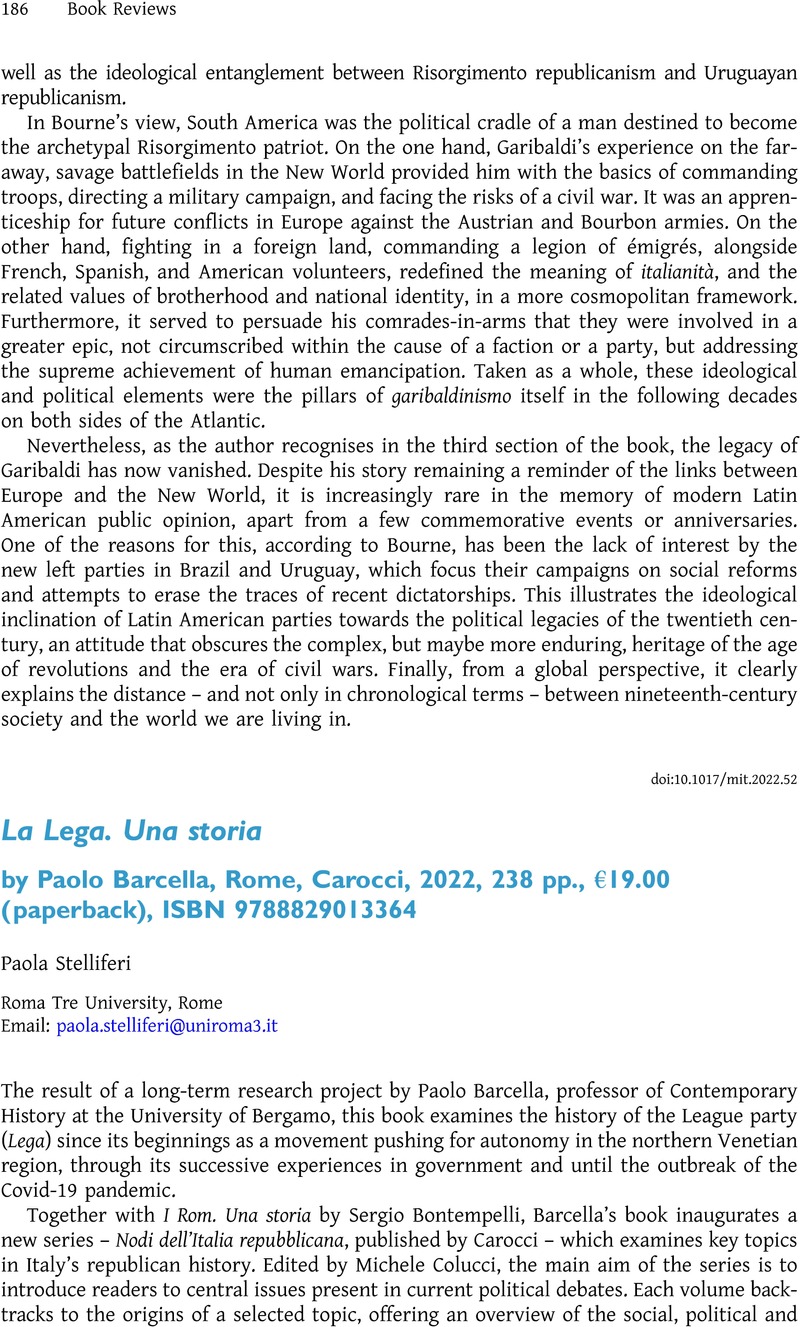No CrossRef data available.
Article contents
La Lega. Una storia by Paolo Barcella, Rome, Carocci, 2022, 238 pp., €19.00 (paperback), ISBN 9788829013364
Review products
La Lega. Una storia by Paolo Barcella, Rome, Carocci, 2022, 238 pp., €19.00 (paperback), ISBN 9788829013364
Published online by Cambridge University Press: 12 December 2022
Abstract
An abstract is not available for this content so a preview has been provided. Please use the Get access link above for information on how to access this content.

- Type
- Book Review
- Information
- Copyright
- Copyright © The Author(s), 2022. Published by Cambridge University Press on behalf of the Association for the Study of Modern Italy


